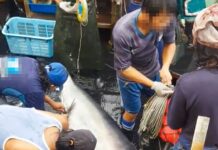By Rachel Muthoni
Nakuru County, Kenya: The recent drought which affected the Horn of Africa calls for collective action among stakeholders towards building resilience among communities to similar and different disasters and shocks.
The drought, in many countries, caused an unprecedented food crisis and affected human beings, livestock, and wildlife.
Besides drought, countries in the Horn of Africa are often faced with other shocks and stresses including floods, locusts, conflicts, and diseases among others that call for interventions from government, and development partners among other stakeholders.
Delegates meeting in Naivasha have resolved to work jointly, through joint working plans at the country level, to bring together stakeholders in various sectors working around Humanitarian, Development, and Peace (HDP) sectors.
The four-day high-level workshop has brought together stakeholders from Kenya, South Sudan, Ethiopia, Somalia, Uganda, and the Democratic Republic of Congo (DRC).
Dubbed the Greater Horn of Africa Regional Knowledge Sharing Meeting (RKSM), the workshop has been organized by United States Agency for International Development (USAID), bringing together over 200 delegates.
In his closing remarks, National Drought Management Authority (NDMA) CEO Lt Col (RTD) Hared Hassan called for community-led approaches saying they were key for sustainable solutions in the HDP nexus.
Countries and stakeholders, he added, needed to incorporate and amplify local voices, noting that they (communities) had been left out of the conversation for far too long.
“Let us shift power back to communities. Let us harness and use local knowledge in our programme design to bring communities back to the table” said Lt Col (RTD) Hared.

He described peacebuilding and conflict management as critical adding that this called for channeling more investment towards peace and leveraging technology, such as drones, for data collection.
In her remarks, Senior Climate Specialist, USAID Bureau for Humanitarian Assistance Shawnee Hoover called for a more holistic approach towards addressing the needs of the people in crisis.
Working in cohesion and with a holistic approach, she noted, actors would avoid duplication while strengthening and leveraging efforts across the board for more impact and efficiency.
“Climate conflict, rising displacements, food insecurity, malnutrition, infectious disease outbreaks, and such compounding crises are becoming the norm,” said, Hoover
While acknowledging the countries’ efforts in learning from each other, Hoover urged them to take a few more steps toward how they can work together with humanitarian, development, and peace counterparts in their own countries.
Intergovernmental Authority on Development (IGAD) Senior Programme Coordinator Dr. Ayan Mahamoud called on stakeholders to remain committed, transformative, and significant enough to realize substantial impactful growth in matters concerning HDP. “We must also remain committed to poverty reduction among communities,” she said, adding, “What you must commit to is to ensure that that goal now trickles down not only at the regional level but to the national level and then sub-national level.”
Trust, commitment, and the right attitude, Dr. Mahamoud noted, are key for joint coordination and successful partnerships among stakeholders.
In a dynamic HDP arena, stakeholders cannot continue working the same and will need not only collaboration but also innovation to deal with shocks and distresses while ensuring that communities maintain peace.
Humanitarian aid, as it emerged, is not just for Africa, but has happened to other countries which are now developed and even become donors.
“At some point, some of the most developed countries in the world received humanitarian assistance, yet they have overcome and no longer need aid, instead, they have become donors,” noted Dr Njoroge.
He called on partners to work together in serving communities saying that this would help in households in disaster-prone areas to be able to stabilize and build resilience.














